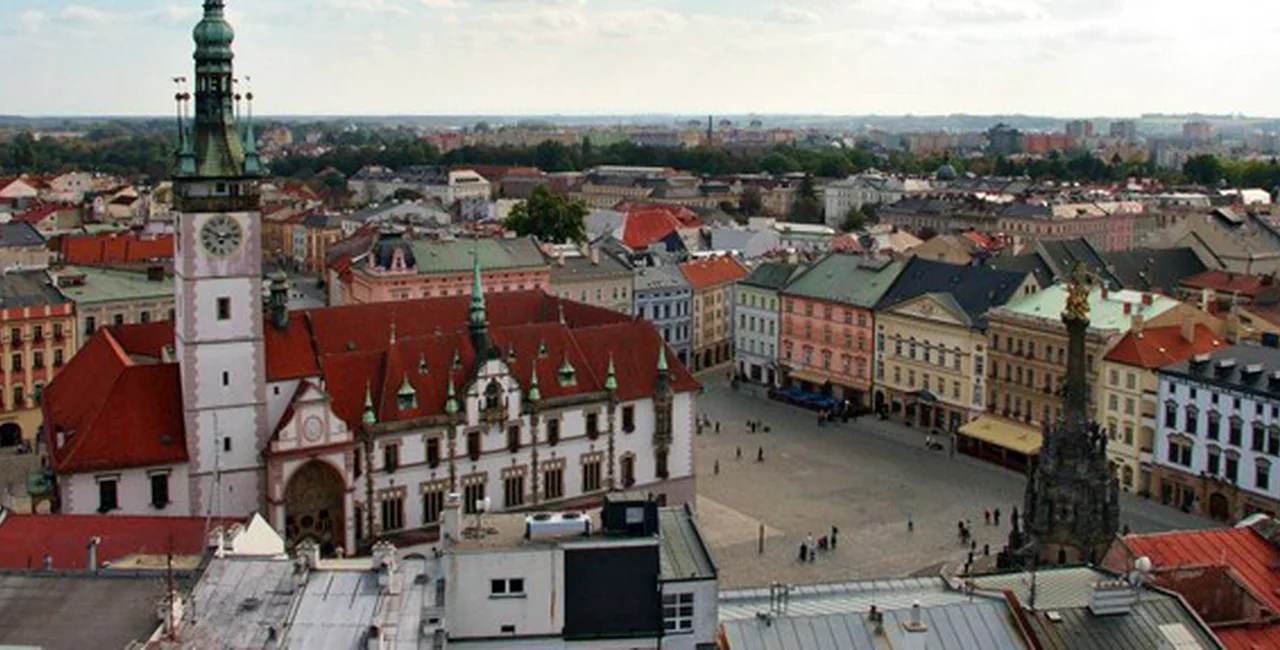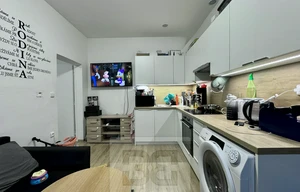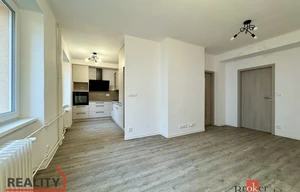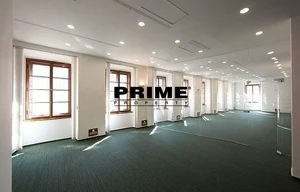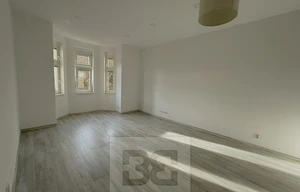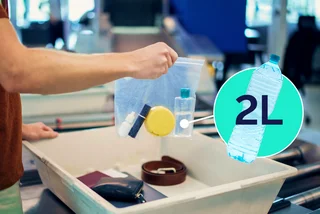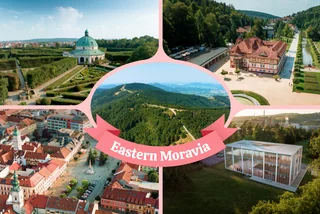If you´ve ever felt rather jaded at the extent to which tourism has taken over the center of Prague, why not try the historic city of
Olomouc
in North Moravia? There you needn´t worry about constant attempts to foist yet more “The Very Best of Mozart/Handel/Vivaldi” concert flyers on you, and the risk of being sucked into a tourist whirlpool with an umbrella at its eye is minimal. Olomouc is an elegant, laid-back city, in contrast to the tourist mayhem of Prague, making it an ideal place for some leisurely urban exploration. Strangely, the tourist literature does not give that impression. Český Krumlo
v
, the Rose Towns of South Bohemia, Kutná hora and Telč are justifiably famous, but the attractions of Olomouc are far less trumpeted. Yet the city is visually arresting, a blend of medieval and Baroque architecture packed into the largest central conservation area in the country. Olomouc is much more then just the obligatory central náměstí, church and handful of historic streets typical of many Czech historic towns, so why is it overlooked? For example, how many towns of its size in the Czech Republic, indeed Europe, can boast a clutch of squares embellished with magnificent Baroque fountains? And the fountains are full-blooded affairs, with writhing, mythical creatures and water spurting from numerous mouths, which would be an asset to any Roman piazza. The six cascades, which could be regarded as the symbol of Olomouc, were recently joined by a seventh, whose modern design is very much in keeping with its older counterparts.All of the above suggests that Olomouc is a provincial city that wants to be a capital, which indeed it was. It enjoyed the status of chief Moravian city until Brno took on this role in 1641, after Olomouc was devastated by the Swedes during the Thirty Years´ War. Its importance was underlined by its strategic location, on the route from Prague to Kraków, which is relatively near, and if you know the latter, you will spot visual similarities between the cities. Olomouc was also a major center of the Counter-Reformation, and the university, founded in 1573, and the glut of Baroque churches are the result of the feverish activities of the Jesuits, who were invited here by the Catholic Church.

If you´ve arrived by train or bus it´s relatively short walk or tram journey along Masarykova to the edge of the historic center, which is shaped like a boomerang and hemmed in by the Mlynský stream and parks following the lines of the old town walls. Start your exploration at Třída svobody, which follows the line of the red-brick fortifications, sections of which can still be seen, including the Theresian gate (Terezská brána). From there Pavelčákova Street leads to Upper Square (Horní Náměstí), at the heart of the historic center. The impressively spacious space is dominated by the spiky white mass of the Town Hall (Radnice), whose tower incorporates an astronomical clock (Orloj). The clock replaces the original created by Master Hanuš, who was responsible for its Prague counterpart. But before images of nodding skeletons, cockerels and spinning saints enter your mind, it should be remembered that the Communists were responsible for the substitution, so of course that meant social inclusion was the theme rather than life and death – a variety of happy but unhealthily pale band of comrades from various of walks of life whiz around obediently on the hour, every hour to an ever brighter future. Despite the Communist take on the clock, including a historically questionable mosaic of a worker brandishing a spanner, it does have a certain appeal, taken on its own – undoubtedly kitsch – terms.Communist historical makeovers are thankfully absent elsewhere on Upper Square, and the Trinity Column (Sloup sv. Trojice) is the real thing. The magnificent structure, the largest in the country, is a complex pyramid of classical allusion resembling a very overgrown wedding cake. In keeping with the superlative theme, the square has not just one but three fountains. The 18th-century Caesar Fountain (Caesarova kašna) depicts Julius Caesar, and the 17th-century Hercules Fountain (Herkulova kašna) shows the mythological figure character in action. The third, created in 2002, is known as Arion´s Fountain (Arionova kašna), a reference to an ancient Greek poet.

Caesar Fountain, Olomouc Upper Square is connected to Lower Square (Dolní Náměstí) to the southwest. It´s a little more humble than its twin, but no less appealing. Like Upper Square, Lower Square is ringed by pastel-colored façades, and the characteristically austere Capuchin monastery contrasts with the Baroque excesses of other churches in the center. The fountain-bagging trail continues here, with cascades dedicated to Neptune (Neptunová kašna) and Jupiter (Jupiterova kašna) and dating from the 17th and 18th centuries, respectively. The fountains, along with Haunschild Palace (Haunschildův palác), decorated with mythological scenes, and the Plague Column of the Virgin Mary (Sloup P. Marie) help ensure that Lower Square is grander than the average provincial town square. Panská Street leads from the northern side of Lower Square to another space, sloping Žerotinovo náměstí, where the townscape takes on a Italian flavor. The square‘s lime trees are a welcome touch of greenery and are a shady spot in the summer heat. St. Michael´s church (sv. Michala) on the right-hand side, is topped by three biretta-like domes, arranged in Byzantine style. The interior is much more exciting, and shrewd use of perspective makes the church feel taller than it really is. Your eyes are lifted to the upper stages and the fizzing activity above. Gold is smeared on like rich, thick paint, and like its counterparts in Prague, the church is a bold statement about the confidence of the Counter-Reformation Further on from St Michael‘s is the tiny chapel of Jan Sarkander (kaple sv. Sarkandra), a reminder of a violent past in stark contrast to the urbane atmosphere of Olomouc today. Polish martyr Sarkander was tortured to death for refusing to divulge information. The chapel stands on the site where he was killed, and you can see the torture instrument where Sarkander was stretched to death by a turn of a wheel. There´s more torture, this time of the visual kind on the other side of Uppper Square. An ugly Communist-era lump of a building is an unwelcome intruder opposite the Mercury Fountain and the Church of St Maurice (sv. Mořice). Like St Michael´s, the terse exterior of St Maurice´s gives little clue to the interior, with its candy-striped pillars. The squat church tower is open to the public and offers excellent views over the city.Beyond the two main squares, to the north, the character of Old Town changes character again, partly due to the many university buildings there. Traffic and trams hurtle along the main thoroughfare, Denisova, passing through Naměstí Republiky, where another fountain, the Tritons (Kašna Tritonů), pops up. Further on, the city´s Gallery of Modern Art (Muzeum moderního umění), part of the Olomouc Museum of Art (Muzeum Umění Olomouc) is worth stopping off for, with regular exhibitions as well as a permanent exhibition, An Art Lover´s House, examining art and architecture in the early 20th century. A spiral staircase in the attic leads to the lantern-like vyhlídka, from where there are superb views over the city.Denisova ultimately leads to the cathedral of St Wenceslas (sv. Václava), in a quiet corner on the edge of the historic center. The church was originally Romanesque but is now mainly a neo-Gothic reconstruction, with a bright interior and polychromatic decoration. The crypt is also open to the public and contains the tombs of bishops. If you want a break from wandering around the streets you can unwind in the parks that define the outline of the Old Town. Further afield, the twin-towered monastery of Svatý kopeček, on a hill to the east of Olomouc and visible from the city, offers a wonderful panorama of the district. It can be reached by bus from Olomouc.
Getting there
There are regular train services to Olomouc from Prague, Brno and Pardubice. The journey by Pendolino train from Prague takes just over 2 hours and the trip is about 2 hours, 40 minutes by Intercity train.
Additional information
Tourist office, Radnice, Horní náměstíTel.: 585 513 385, 585 513 392Open daily 9 am – 7 pm http://www.olomouc.eu/eng/www.olomouc-tourism.czOlomouc Museum of Art: http://www.olmuart.cz/












 Reading time: 6 minutes
Reading time: 6 minutes 